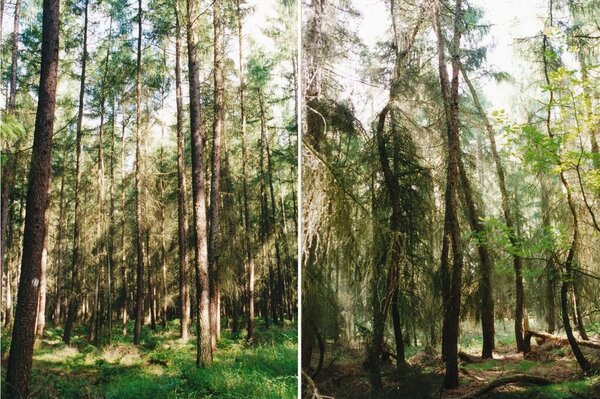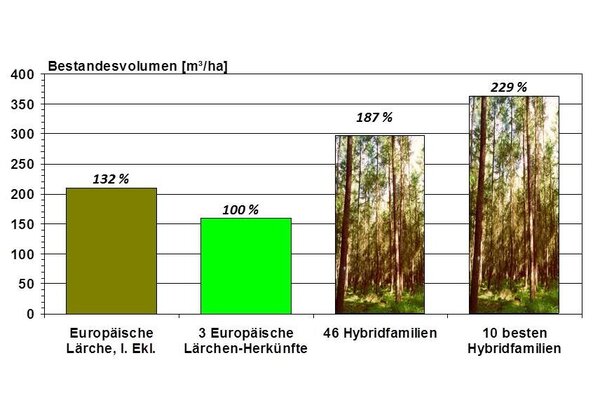Expertise
Breeding of Hybrid Larch – an Example for Successful Forest Tree Breeding?
Volker Schneck | 20.06.2022
Naturally occurring hybrids of European and Japanese larch show exceptionally high wood production. This has led to successful breeding programs. Shortcomings exist in the practical implementation.
About 100 years ago spontaneously occurring hybrids between European and Japanese larch were described in Europe for the first time. One striking aspect of these hybrids was their excellent growth performance. Based on these observations, in the mid-1930s hybrid larch was created artificially by controlled crossings to examine the offspring in field tests.
Between 1950 and 1980, programs were initiated at different locations in Germany for targeted breeding of hybrid larch. Two of these programs, differing significantly in the methodology and parents trees used, were developed at the predecessor institutions of the Thünen Institute of Forest Genetics:
- the breeding program for the northeastern German lowlands, realized in Waldsieversdorf
- the long-term breeding program by Professor Langner (Thünen Institute of Forest Genetics) in cooperation with the Saatzuchtfirma of Lochow - Petkus.
Hybrid with superior growth performance
The Waldsieversdorf program includes 11 progeny tests with about 145 progeny, the Langner program 30 tests with more than 80 progenies. All field tests were laid out between 1972-1992. Both programs demonstrated impressively that the hybrid larch has superior growth compared with the pure species.
The results of both programs made it possible to identify a number of elite trees that produce well-performing hybrids and thus qualify for approval as parent of a family in the category "Tested". Likewise, grafts of these trees can be used for the establishment of seed orchards for the reproduction of the best hybrid progenies.
The breeding of hybrid larch is an impressive example of what can be achieved with Forest Tree Breeding in Germany. However, successful forest tree breeding also implies that the improved material is produced and in demand by the market. In this respect there are still considerable deficits in hybrid larch in Germany.
This may change when the advantages of this tree species in climate change are recognised. As a "deep rooter", hybrid larch can tap into the water still present in the subsoil during dry phases. Thanks to its pronounced juvenile growth, stemwood can be obtained in low production times, thus significantly reducing the production risks associated with climate change.



![[Translate to English:] Logo des Bundesministerium für Ernährung und Landwirtschaft](/media/allgemein/logos/BMEL_Logo.svg)